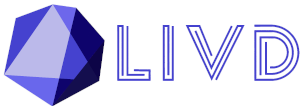Today’s workplace is more generationally diverse than ever before. Baby Boomers, Gen X, Millennials, and Gen Z now work side-by-side — each bringing unique perspectives, priorities, and values to the table.
For HR leaders and business owners, this diversity presents both an opportunity and a challenge. How can you build a culture where everyone — regardless of age or experience — feels valued, connected, and engaged?
The answer lies in understanding what drives each generation, finding shared purpose, and offering benefits and experiences that meet people where they are.
This article explores how to cultivate stronger multigenerational teams and how personalized lifestyle benefits can help bridge generational gaps, strengthen collaboration, and boost overall engagement.
Why Generational Diversity Is a Competitive Advantage
A multigenerational workforce can be one of an organization’s greatest strengths. Each generation brings a different lens to the business:
- Baby Boomers offer experience, dedication, and deep institutional knowledge.
- Gen X brings pragmatism, independence, and a balance-first mindset.
- Millennials drive collaboration, creativity, and digital fluency.
- Gen Z introduces innovation, inclusivity, and tech-native agility.
When these strengths come together, teams become more creative, adaptive, and resilient. The key is not just coexisting but creating intentional connection across generations.
Understanding Generational Expectations and Motivators
While generational traits shouldn’t be treated as absolutes, understanding general motivators can help HR leaders tailor engagement strategies:
- Baby Boomers (1946–1964): Value loyalty, personal recognition, and structured growth opportunities.
- Gen X (1965–1980): Seek autonomy, flexibility, and clear performance outcomes.
- Millennials (1981–2000): Prioritize purpose, learning, and work-life balance.
- Gen Z (2001 and beyond): Expect inclusivity, authenticity, and access to technology that empowers them.
Aligning your workplace strategy with these motivators doesn’t require a complete overhaul — it’s about designing flexible systems that allow for personalization and choice.
That’s where modern lifestyle benefits can make a real difference.
Lifestyle Benefits: The Bridge Between Generations
Traditional “one-size-fits-all” benefits are losing their appeal. What today’s workforce — across every generation — truly values is choice.
Lifestyle benefits empower employees to choose what matters most to them — whether that’s wellness and fitness, travel, childcare, professional growth, or mental health support.
For HR teams, platforms like LIVD make this flexibility easy to deliver. SMBs can allocate a monthly benefits budget per employee, giving them the freedom to select perks that suit their lifestyles.
This approach removes the guesswork for HR while giving employees ownership over their experience — no matter their age, role, or priorities.
How HR Leaders Can Unite a Multigenerational Workforce
Creating a workplace where four generations collaborate effectively takes intentionality. Here are five strategies HR leaders can use to strengthen connection and performance:
1. Foster Open Communication and Transparency
Generational differences in communication styles can lead to misunderstandings. Encourage open dialogue through multiple channels — from in-person meetings to Slack or video calls — ensuring everyone feels heard and included.
2. Promote Cross-Generational Mentorship
Pair employees across age groups to encourage two-way learning. Boomers and Gen Xers can share leadership experience and institutional knowledge, while Millennials and Gen Zers can teach digital tools and innovative ways of working.
3. Offer Flexible Work Options for All
Flexibility isn’t a Millennial perk — it’s a universal expectation. According to Joblist, 43% of employees would quit if required to return to the office full-time. Offering remote options, compressed workweeks, or flexible scheduling can meet diverse needs across generations.
4. Recognize and Reward Individual Contributions
Recognition looks different for everyone. Some employees value public appreciation, while others prefer personal gestures or tangible rewards. LIVD helps streamline recognition by letting employees redeem rewards in ways that fit their lifestyles — reinforcing the message that their contribution matters.
5. Invest in Continuous Learning and Growth
Every generation wants to learn — they just do it differently. Combine in-person training with digital learning platforms to accommodate diverse preferences. Encouraging lifelong learning signals that your organization values growth, no matter where an employee is in their career.
Creating a Culture of Mutual Respect
At the heart of every high-performing multigenerational team is respect.
HR leaders can cultivate this by ensuring every employee — regardless of age — feels valued for their contributions. Inclusive decision-making, open collaboration, and transparent communication create a culture where diversity is not just celebrated but leveraged.
Cross-generational team projects, reverse mentoring, and shared goals also build connection and break down stereotypes.
When people feel respected, they show up more engaged, more innovative, and more committed to the organization’s success.
The Role of HR in Shaping the Future of Work
As workforces become more diverse — generationally, culturally, and geographically — HR’s role is evolving. It’s no longer just about managing policies; it’s about designing experiences that align with employee expectations and company purpose.
Lifestyle benefits, flexible work options, and continuous learning aren’t just trends — they’re the foundation of the modern employee experience.
By investing in these areas, SMBs can level the playing field with larger organizations, attracting and retaining talent that drives long-term success.
Final Thoughts: Building Bridges, Not Barriers
The most successful organizations don’t just manage generational differences — they harness them.
By leading with empathy, fostering communication, and empowering employees through personalized lifestyle benefits, HR leaders can create workplaces where every generation thrives together.
The result?
A more connected, inspired, and future-ready workforce.
Ready to build a stronger, more connected team?
Discover how LIVD helps HR leaders offer flexible, personalized lifestyle benefits that engage every generation — without the admin burden.
👉 Learn more at livdapp.com

